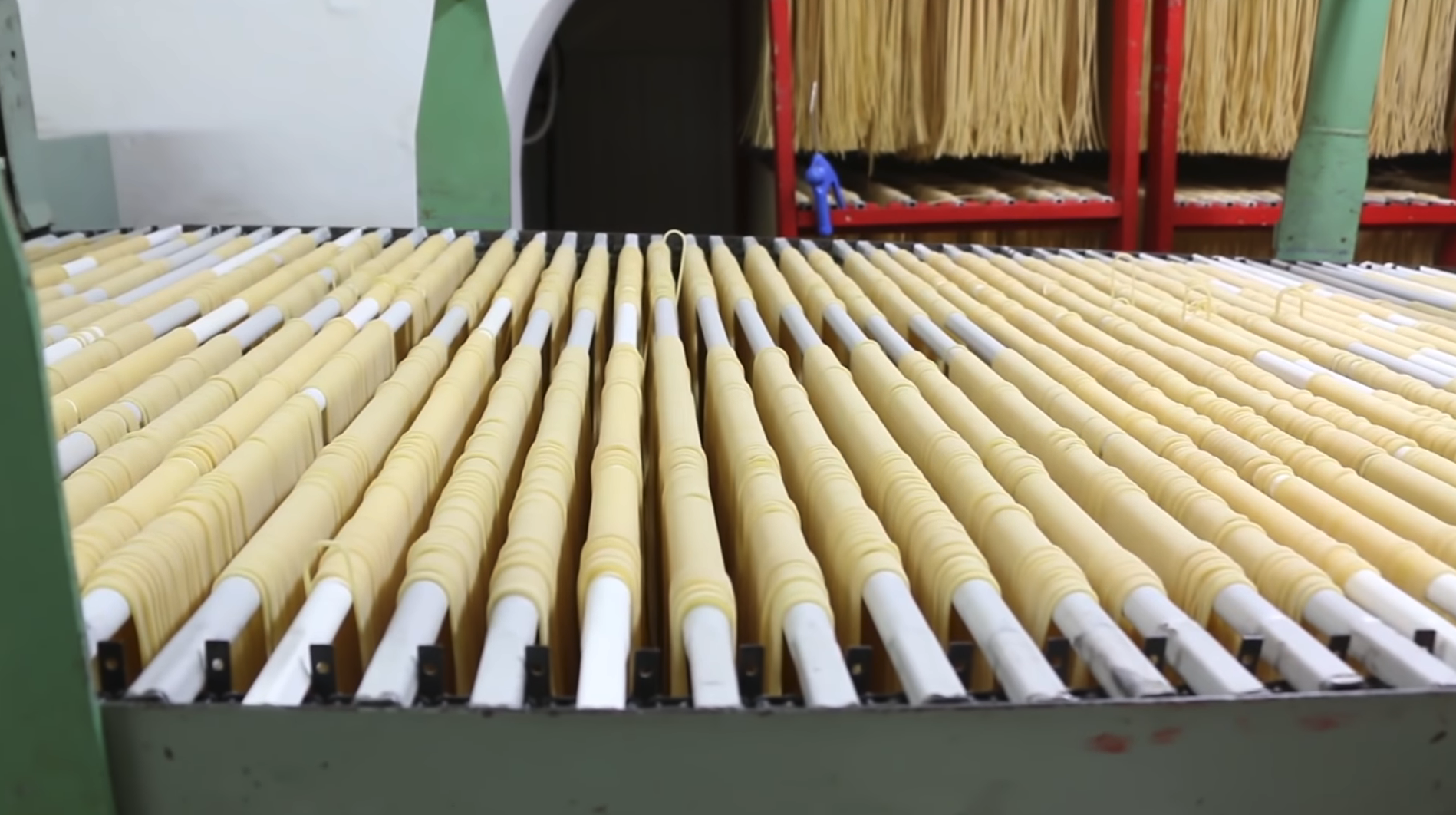Google “healthy food” and you likely won’t find pasta on the list. But not all pasta is created equal. The nutritional value from one pasta brand to another can vary greatly. This is because the production process has a huge impact on the ultimate nutritional value.
Pasta is often lumped together with other refined products such as breads, cakes, and cookies. This is because most pasta eaten around the world is made in huge industrial facilities with low quality raw materials.
But just because you’re watching your diet doesn’t mean you have to give up pasta! It just means that maybe you need to pay a little more attention to the brands you’re buying.
Quick drying means difficult digestion
Now to get into the science. Traditional pasta is made from wheat, which of course contains gluten. In industrial pasta production facilities, the pasta is dried as quickly as possible at high temperatures. The dough undergoes such a thermal shock during this process that its gluten mesh compresses and tightens under the environmental pressure.
A tight gluten mesh has consequences: it makes the pasta much more difficult to digest and requires much more energy to break down in the body. Plus, the pasta essentially cannot be overcooked since it absorbs less water while cooking. This also means the cooked pasta has an uneven texture.
Slow drying means easier digestion
Artisanal pasta makers, such as Pastificio Martelli, forgo the industrial drying process to create a product that is more delicious and easier on our bodies. A long, slow drying process allows the gluten mesh of the dough to remain almost completely unchanged. A less constricted gluten mesh is easier for our bodies to break down and absorb.
Furthermore, the slow drying process creates a pasta that evenly absorbs water during cooking. This means your pasta will cook more evenly and you can find the perfect ‘al dente” moment. Chefs say the most famous characteristic of pasta Martelli is that it always cooks evenly on the outside and the inside!
Pastificio Martelli is one of these traditional pasta producers using the slow drying method. Their pasta is dried for up to 52 hours at 35°C. Compare this to industrial producers, who accomplish the same task in 2-10 hours at up to 120°C! Martelli has two types of pasta dryers. A wooden one from the 1950s used for short pasta shapes, and an older one for longer pasta that dates back to before WW2. Both dryers function in accordance with the weather outside, they aren’t controlled by a computer! Martelli only makes one pasta shape per day so they can focus on quality.
This quote really says it all:
“what the biggest industrial pasta makers do in five hours, we do in one year.”
